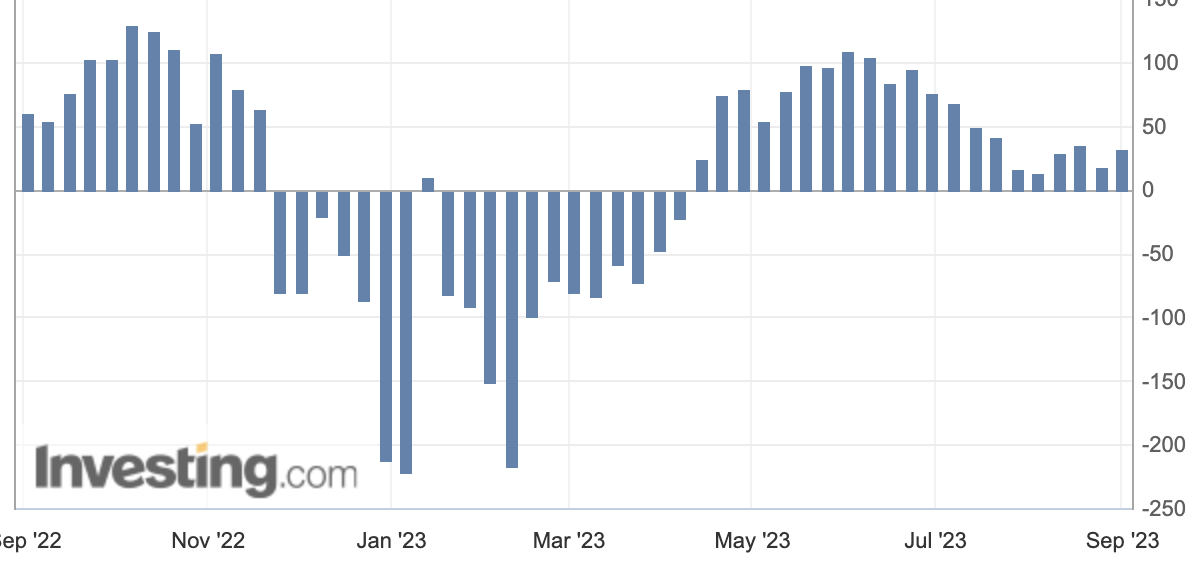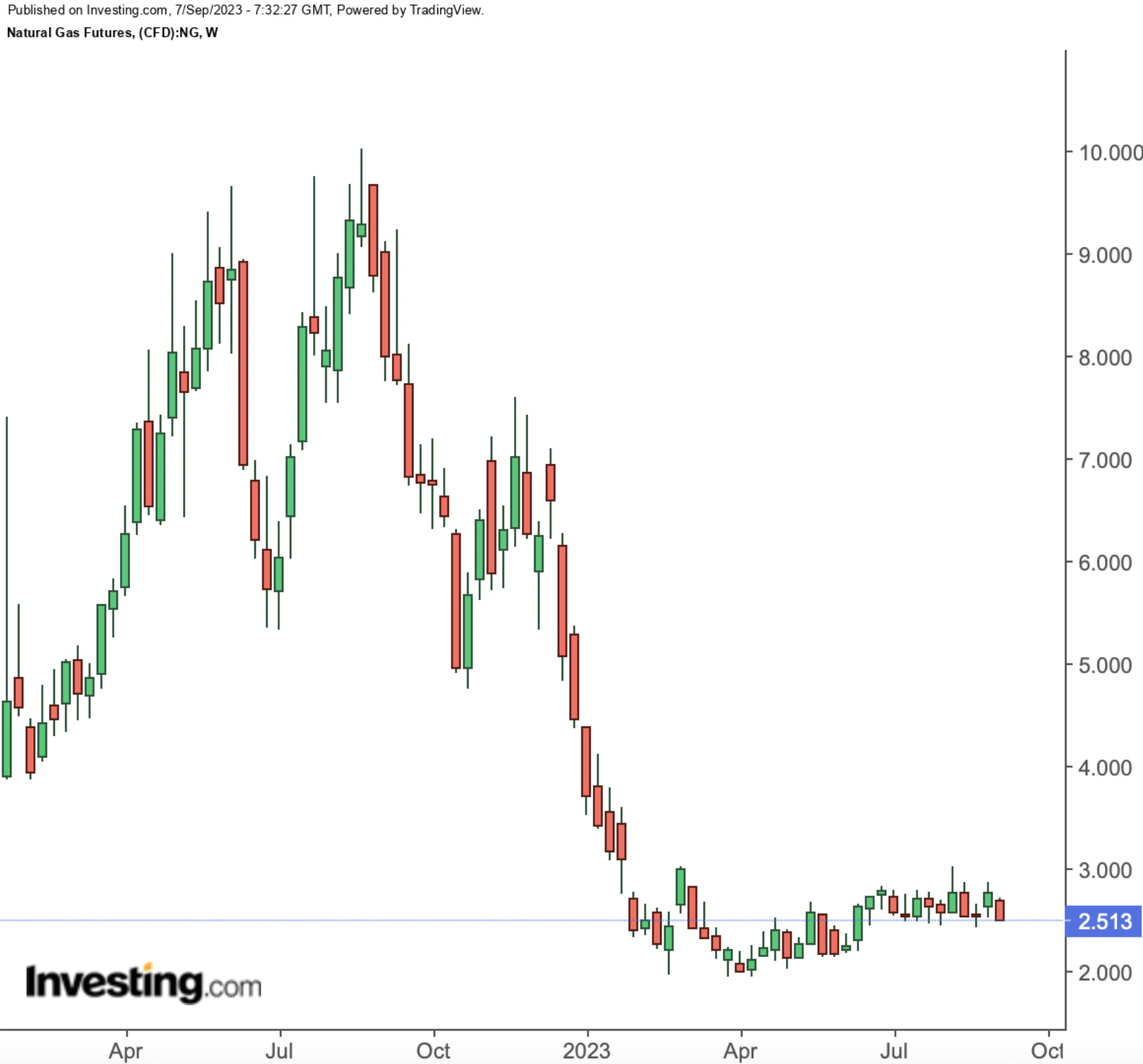- Previous week’s 32-bcf build, while small, is below 5-year average of 51 bcf
- After weeks of huge misses on estimates, last week’s variance in data was smallest
- Analysts are calling for a storage build of 43 bcf for the just-ended week
It’s quite fascinating the difference a week can make for the storage forecasters in natural gas. There’s no certainty yet if a new trend is in place for those who had been off-target week after week — sometimes horrendously — on the number of cubic feet that got injected into underground salt caverns in the United States.
But narrowing the variance between market estimates and the billion cubic feet reported each week by the Energy Information Administration, or EIA, is certainly a good thing — enough for some to think of it as a boon.
John Sodergreen, the author of a weekly trade journal on natural gas called “The Desk”, opined on this in his latest note:
“Last week’s 32-bcf build, while unseasonably small [also lower than the five-year average build of 51 bcf and 29 bcf lower than last year’s 61-bcf injection] was nonetheless a good omen for analysts.”
“Given the number of surprises out of EIA across the past few weeks, last week’s reported number was very close to market consensus.”
While the most far-off estimate during the week ended Aug. 25 called for a build of 25 bcf, the average and closest was 31 bcf — just one digit below what the EIA reported. 
Most of the misses for that particular week were again in the south-central region, home to inventory and flow data that is about as transparent as Russian crude exports data (pun intended).
The EIA reported a whopping 22-bcf pull for that region, with the survey average coming in at a mere 15 bcf.
For storage change during the week to Sept. 1, given the heat in that area, the quirky wind stats plus the extended holiday weekend of Sept. 4, and less blistering heat in border regions, the south-central pull should be less than half what we saw the previous week.
Power generation for the Lower 48 US states was a lot lower last week than the previous week. Generation levels remained low through the holiday weekend, with top-line figures around 480-500 GW. Criterion Research reported that gas gen was down 16.4 gigawatts, or GW, and coal by 14.9 GW.
“As the overall power stack drops, natural gas has retained a stable 70% of the thermal mix,” Criterion said.
The estimated range for storage addition in the just-ended week was 31 to 52 bcf, with the average being called at 43 bcf.
Platts says a 41-bcf build this week should be right on the money.
“A 41-bcf injection would imply that US supply-demand balances were approximately 1.3 bcf/d tighter than during the week ended Aug. 25, giving way to a larger inventory build.”
Fundamentals during the week in progress reflect looser balances, Platts said, giving way to a larger storage injection to be reported for the week ending Sept. 8.
“Based on preliminary estimates for supply and demand, US natural gas stocks are on track to rise by an estimated 86 bcf for the week in progress.”
Houston-based energy markets advisory Gelber & Associates said the bearish narrative for gas now was largely supported by a new heat reality – that the blistering heat of summer will continue to taper, and fast, going forward.
Gelber, however, said changes in gas prices were often the cause of consensus rather than the other way around. It
“Beyond weather forecasts, for example, the opinion that storage is in a bearish position is somewhat overexaggerated. The fact remains that, at least in the near term, we are trending toward the five-year average. We feel that further evidence is needed for stark storage outlooks to be warranted.”
Rhett Milne of NatgasWeather.com says this week’s EIA report is expected to show another smaller-than-normal build aided by light wind energy generation.
The following two builds will also be slightly smaller than normal to drop surpluses toward 210 bcf, Milne said, adding:
“The build for next week’s EIA report 2 would be smaller if not for the Labor Day Holiday Sept. 4. Cooler trends for the second half of September will lead to larger builds that will stall surpluses near 200 bcf.”
“It would help the bullish case if the supply and demand balance were to tighten, which could be accomplished through lighter US production or stronger LNG exports.”
In effect, the weather change wipes out most of what has been a steadily reported year-over-year coal-to-gas switching level near 2.5 bcf/d.
While it is a more bearish pattern for now, if weather maps depict a warm south and cool north pattern into October, this will flip to a neutral or bullish setup. 
Gas production on Wednesday was down about 1 bcf/d to 101 bcf/d because of maintenance work in the Northeast, according to analysts at Wood Mackenzie in a report carried by trade journal naturalgasintel.com.
However, upward revisions were expected, and output overall remains strong and near record levels, slightly above 102 bcf/d, Wood Mackenzie’s analysts said.
Demand, meanwhile, also was robust on Wednesday by early September standards, with late-summer heat lingering in the South and parts of both the East and West.
Forecasts, though, called for milder conditions later this month, grabbing the futures market’s attention and sparking fresh concerns about supply/demand imbalance as the shoulder season nears.
Natural gas prices continue to “languish” because “we continue to see the market as adequately supplied, especially given the likelihood of an El Niño winter,” BMO Capital Markets analyst Randy Ollenberger said.
He referred to long-range forecasts that are calling for El Niño conditions, which historically have resulted in relatively mild winter temperatures and soft heating demand.
Based on recent and upcoming weather patterns, the next two to three storage reports could reveal smaller-than-average weekly injections, NatGasWeather said.
“However, after cooler trends for mid- and late September, larger builds will be lining up thereafter, a few of which could approach 100 Bcf without hotter trends,” the firm added.
Analysts at The Schork Report noted that early hints of a cold winter could be a price catalyst this fall.
“We tend to see the highest gas prices several months in advance of the cold weather,” they said. “This is because uncertainty builds rapidly regarding the market’s ability to offset imminent furnace demand.”
Still, with fall weather approaching and El Niño conditions looming later in the year, futures market bulls have little to seize upon at the moment.
***
Disclaimer: The aim of this article is purely to inform and does not in any way represent an inducement or recommendation to buy or sell any commodity or its related securities. The author Barani Krishnan does not hold a position in the commodities and securities he writes about. He typically uses a range of views outside his own to bring diversity to his analysis of any market. For neutrality, he sometimes presents contrarian views and market variables.
Which stock should you buy in your very next trade?
With valuations skyrocketing in 2024, many investors are uneasy putting more money into stocks. Unsure where to invest next? Get access to our proven portfolios and discover high-potential opportunities.
In 2024 alone, ProPicks AI identified 2 stocks that surged over 150%, 4 additional stocks that leaped over 30%, and 3 more that climbed over 25%. That's an impressive track record.
With portfolios tailored for Dow stocks, S&P stocks, Tech stocks, and Mid Cap stocks, you can explore various wealth-building strategies.
